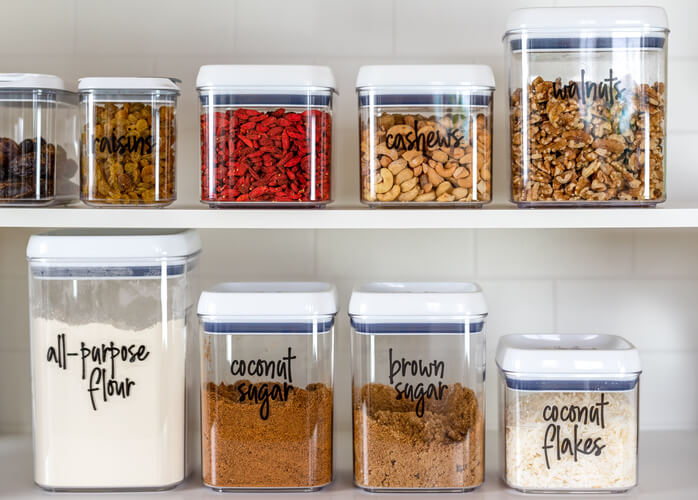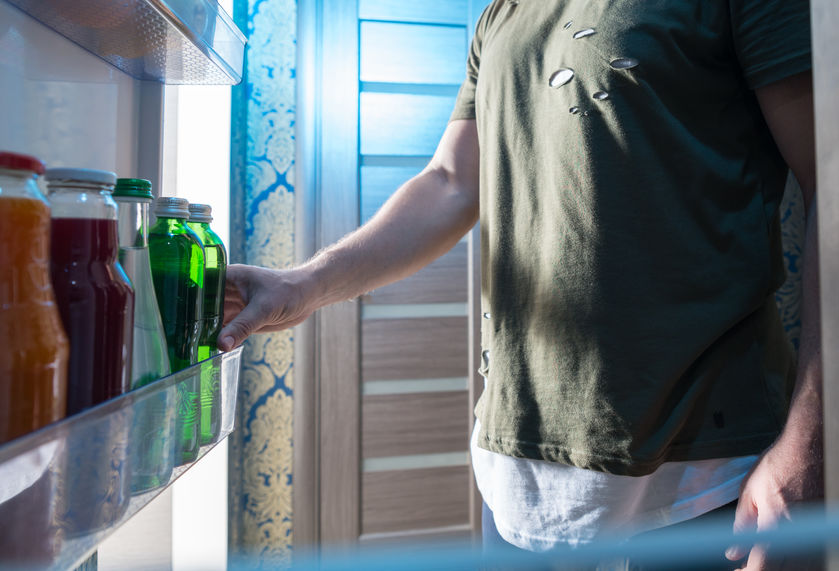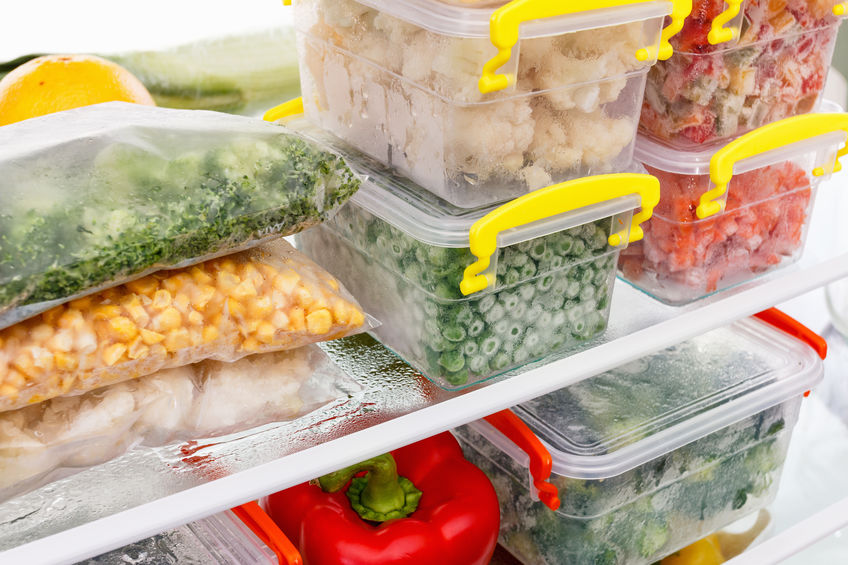- Clean Home
- Kitchen Cleaning & Organizing
- Kitchen Food Storage Tips
Kitchen Food Storage Tips
Of course, food takes up a lot of space in your kitchen. These kitchen food storage tips are broken down into three categories: pantry items, cold foods requiring refrigeration, and frozen foods.
Let's explore these areas and discover practical ways to organize and streamline kitchen food storage.
Kitchen Food Storage Tips For a Storage Center
No pantry? No problem. If you don't have a built-in food pantry, assign some cabinets to the task to create a kitchen food storage center.
Ideally, choose a few large cabinets close to your refrigerator and stove. Most kitchens have many cabinets and drawers, but they are usually a chaotic mess. You buy marinara sauce, just to find three jars hidden behind the olive oil. The solution?
Organize your storage so you know what you have and where it is—group foods by type. Don't just stuff items into the first open space you see. Instead, stock foodstuffs in the same place each time, grouping like items.
In my pantry, I put crackers, chips, and other snacks on the highest shelf that are not easily reached; cereal and other breakfast items are on the second shelf.
The third shelf contains pasta, pasta sauces, and boxed pasta and rice mixes; the fourth contains canned vegetables and fruit; and the bottom contains soups and canned beans.
This way, I can tell at a glance what I have and what I need to buy. If there's no oatmeal on the second shelf, I know there is no oatmeal in the house.
Put rarely used items on the tallest shelves and in the back of cabinets. Put your family's favorite foods in the middle, at eye level. Heavy items such as cans go near the bottom.
Space-Saving Kitchen Food Storage Tips
- Use lazy Susans, pull-out shelving, and wire racks to maximize kitchen food storage space.
- Repackage shelf hogs. Get rid of half-empty cereal cartons and place the cereal in smaller, airtight plastic containers. Then label them with their contents and expiration dates. Unlike wine, foods don't get better with age!
- Place drawer liners in drawers to keep contents from slipping and sliding around. You'll be rewarded when you carefully divide everything up, using varying sizes of storage containers to house your stuff, and keep it that way.
This also makes it easy to wipe off the dust that naturally settles there.
Store bulk purchases - the 17 boxes of pasta, 40 cans of chicken noodle soup, and 100 rolls of paper towels you got for a steal at the club store - in the garage or downstairs in the basement. Call this your overflow pantry, and use it to replenish your supplies.
Kitchen Food Storage Tips in the Refrigerator
Essentially, no food benefits from storage. You want to eat everything as fresh as you can. Since we can't all tromp out to the garden to harvest produce for every meal, here are some guidelines to help your fridge run at its best.
- To keep food from spoiling in the refrigerator, the temperature needs to be between 34 F and 40 F. You can't depend on the little gauge (1-5) in the fridge. Get a refrigerator thermometer.
- Some parts of your refrigerator are colder than others. The bottom meat compartment is designed to store meat, so put meat there. Not only is this the coldest area, but if a package leaks, it won't contaminate other foods.
- The door is the warmest part of the refrigerator. This is the best place for nonperishables (sodas) - not perishables like eggs.
- Don't put hot food in the refrigerator. Bring it to room temperature before refrigerating, as hot food can cause the refrigerator temperature to drop.
- On the other hand, don't leave food out too long, either. Refrigerate prepared food within two hours of cooking (one hour in the summer).
- Don't overload the refrigerator. Parties are dangerous because you cram a lot of food into the fridge and then continually open the door. Turn the temperature down during these occasions to keep the food cold.
- Cover foods tightly. Leave meats in their original packaging to prevent the spread of bacteria.
- Don't store breads, cookies, or cakes in the refrigerator; they will become stale.
Frozen Food Storage
Freezing food will keep it from spoiling, but the quality will still deteriorate over time. Use frozen foods as soon as possible, and follow these guidelines:
- Don't refreeze foods.
- Mark the date on food when you put them in the freezer.
- Don't rely on the little freezer gauge (1-5). You can buy a thermometer instead. The freezer should be kept at 0°F to 5°F.
- Freeze only fresh foods.
- Wrap foods tightly.
- Clean Home
- Kitchen Cleaning & Organizing
- Kitchen Food Storage Tips










